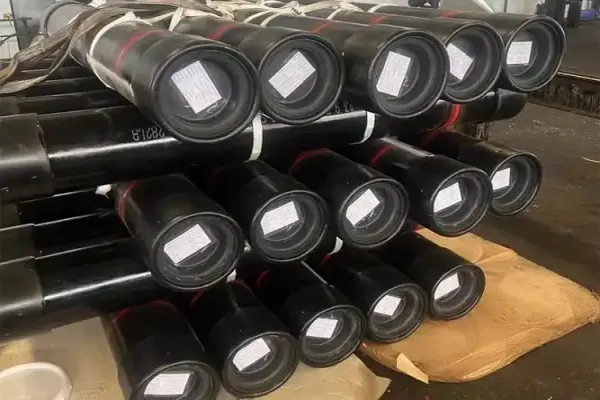Pup Joint OCTG Material Grade: Understanding the Basics and Selection Criteria
In the oil and gas industry, pup joints play a crucial role in wellbore operations, ensuring proper adjustment of tubing or casing string length. These short pipe sections, often made from high-strength materials, adhere to OCTG (Oil Country Tubular Goods) standards to withstand extreme downhole conditions. Selecting the right material grade for a pup joint is essential to ensure durability, corrosion resistance, and optimal well performance.
1. What is a Pup Joint?
Pup Joint Definition:
Pup joint is a casing or tubing shorter than standard length used to handle production tubing components and to space out full-length tubing and casing strings. Pup joints are also known as saver sub, spacers and pup.
Types of Pup Joints:
Tubing Pup Joint: Used in production tubing strings.
Casing Pup Joint: Applied in casing strings to fine-tune casing depth.
Drill Pipe Pup Joint: Used in drilling operations to adjust drill string length.
These pup joints are manufactured according to API 5CT (for casing and tubing) and API 5DP (for drill pipes) standards.
2. Common OCTG Material Grades for Pup Joints
The selection of pup joint material is determined by well conditions, such as pressure, temperature, and corrosive environments. Below are the most commonly used API 5CT material grades for tubing and casing pup joints:
a)
API 5CT J55 & K55
Features:
Yield strength: 55,000 psi (J55), 55,000–95,000 psi (K55)
Moderate toughness and durability
Used in shallow and medium-depth wells
Not suitable for high-pressure or corrosive environments
Applications: Low-pressure oil and gas wells, water wells
b) API 5CT N80 & L80
Features:
Yield strength: 80,000 psi
Higher tensile strength and wear resistance
L80 offers better corrosion resistance, particularly in CO₂ environments
Available in different variations (L80-1, L80-9Cr, L80-13Cr) for different corrosion resistance levels
Applications: Medium-depth wells, CO₂ and mildly corrosive environments
c) API 5CT P110
Features:
Yield strength: 110,000 psi
High tensile strength and pressure resistance
Suitable for deep and high-pressure wells
Not recommended for sour service unless additional protection is applied
Applications: Deep wells, high-pressure reservoirs
d) API 5CT Q125
Features:
Yield strength: 125,000 psi
Extreme high-strength material
Used in ultra-deep wells and high-stress environments
Requires careful handling to avoid hydrogen embrittlement
Applications: Ultra-deep wells, HPHT (High-Pressure High-Temperature) environments
3. Additional Considerations: Corrosion Resistance & Coatings
For corrosive environments, such as wells with high H₂S (sour gas) or CO₂ exposure, selecting the right material is crucial.
a) Corrosion-Resistant Alloys (CRA) Pup Joints
13Cr Stainless Steel (for CO₂ wells)
Super 13Cr (higher corrosion resistance)
Nickel-based alloys (Inconel 625, 718) for extreme corrosion resistance
b) Protective Coatings
Zinc coating: Prevents oxidation and rust
Phosphating: Enhances corrosion resistance
Internal Plastic Coating (IPC): Protects against harsh chemicals
4. Selecting the Right Pup Joint Material Grade
When choosing a pup joint material, consider:
Well depth and pressure: Higher pressure requires stronger grades like P110 or Q125.
Corrosive elements: If H₂S or CO₂ is present, use L80-13Cr or CRA materials.
Mechanical requirements: Ensure yield and tensile strength match well conditions.
|
Grade
|
Yield Strength (psi)
|
Best for
|
Corrosion Resistance
|
|
J55/K55
|
55,000–95,000
|
Shallow wells
|
Low
|
|
N80
|
80,000
|
Medium-depth wells
|
Moderate
|
|
L80-1
|
80,000
|
CO₂ environments
|
High
|
|
P110
|
110,000
|
Deep wells, HPHT
|
Low
|
|
Q125
|
125,000
|
Ultra-deep wells
|
Low
|
|
13Cr
|
Varies
|
CO₂ & mildly sour wells
|
Very High
|

5. Conclusion
Choosing the right
pup joint material grade is critical for well integrity, longevity, and operational efficiency. The selection depends on factors such as well depth, pressure, and corrosion resistance. Operators should refer to API 5CT standards and consider protective coatings or corrosion-resistant alloys for harsh environments.
By making informed decisions on
OCTG pup joint material grades, companies can enhance well performance, reduce failures, and improve long-term cost efficiency in oil and gas operations.






 English
English Español
Español بالعربية
بالعربية











 Phone :
Phone :  Whatsapp :
Whatsapp :  Email :
Email : 


